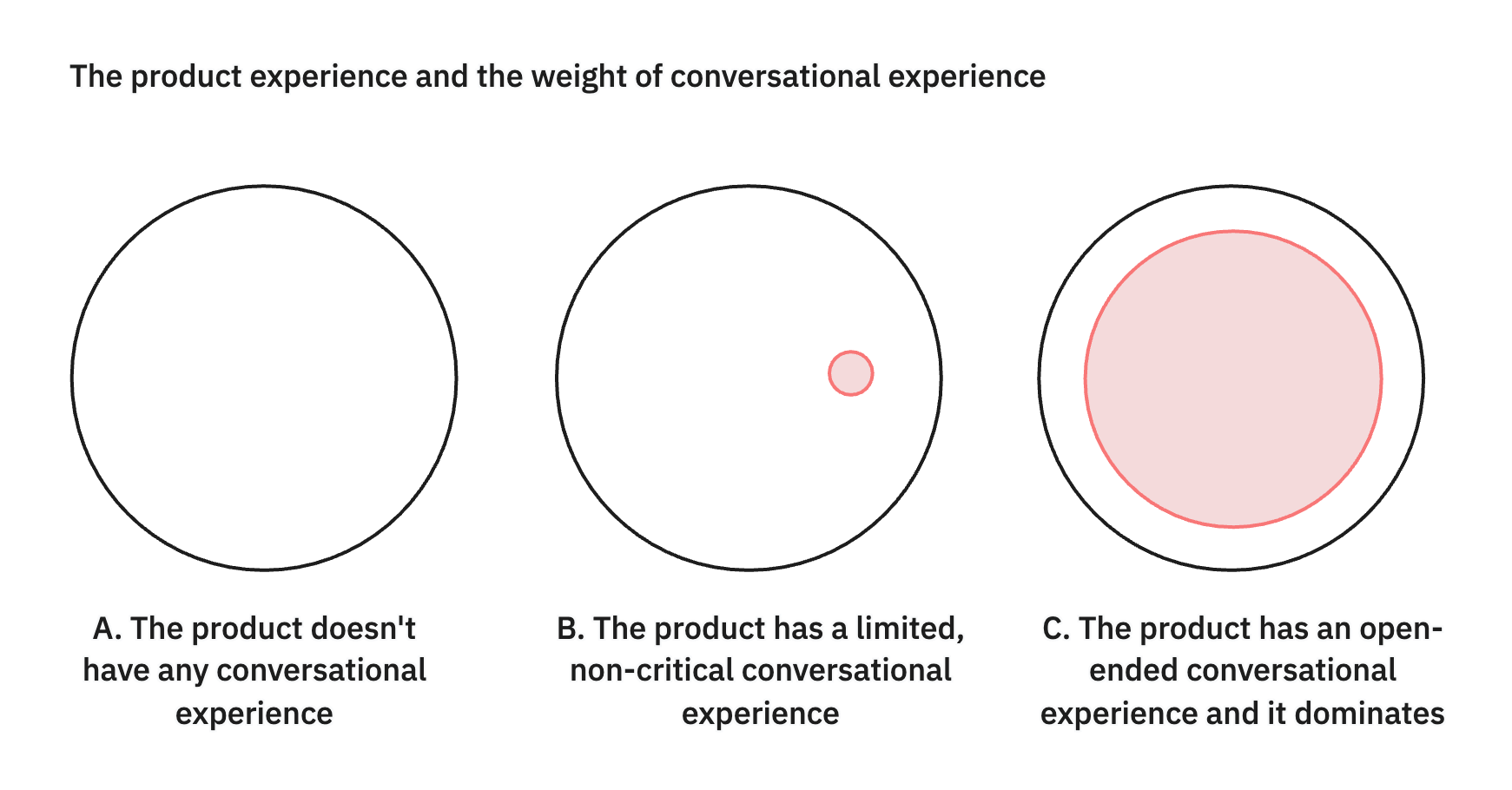TL;DR: If you build products, know that shifting from a tool to an open-ended companion rewires the user experience. Conversation becomes the most salient surface, users judge it like a person, and churn reasons get opaque. Treat it as a new primary product surface.
Building an application with an embedded, conversational AI companion is an exciting idea, e.g., "a fitness app with a coach you can talk to."
Many products can be more engaging and useful if people can talk to them in an open-ended way. Whether it is a fitness app, calendar app, Bible app, or any other app, a conversational companion can understand more about what the user really wants and provide a richer, more emotionally stimulating experience.
However, adding a conversational companion is also tricky.
There's a simple spectrum:
- (A) No conversational experience.
- (B) A task bot: narrow, slot-filling, goal-bounded, e.g. "Tell me the countries you want to travel to and I will find the cheapest ticket for your next trip."
- (C) A companion: open-ended, with a relationship layer—identity, memory, tone, and proactive behavior.
When you offer (C), it changes the whole dynamic. You promise the user that you can handle their messy, fuzzy, emotionally rich speech. The user switches modes and interacts with your app not as a tool, but as a human-like being.
In this interaction mode, the conversational experience is visceral and natural for most people. That shift has a few repercussions:
- Salience shift: the conversational surface becomes the most salient experience in your product. Other elements feel secondary.
- Mode switch: users bring ambiguity and emotion; they expect understanding, not just completion.
- Harsh evaluation: people judge tone, timing, wording, and recall in a split second.
- Debugging opacity: when the conversation fails, it can turn people off from the whole product—and it is hard to know exactly why.
As a result, once you add an open-ended conversational experience, it often dominates the whole product experience. There is no middle ground.

Imagine you are offering a personal trainer to a customer. There is a utilitarian aspect to whether the physical training is good. Yet what the user will emotionally remember most from the first session is the human interaction.
In this example, when potential clients bounce after their experience with a personal trainer, it is hard to understand whether they are the wrong clients, you are offering the wrong training, your trainer is unlikable, or you set the wrong expectation. The human-to-human experience makes debugging this process harder—churn reasons become opaque.
In the same way, when you have an open-ended conversational experience in your product and your users bounce, it is hard to understand exactly why. Was it the expectation you set? The companion's tone? A memory failure? A safety refusal that felt off? The underlying utility?
We observed this in a few products. When the product doesn't work, you try making tweaks and nothing works reliably. When you try making bigger changes, you need to redesign the whole experience. You get stuck in a loop of tweaks and disappointments.
The classic process for designing digital products doesn't work in this situation.
Most teams are used to designing products starting with visual sketches and user flows. When the experience is primarily visual and tool-like, that process works.
However, when the experience is primarily conversational, you need a different design process. The unit of value is the exchange, not the screen. Getting the conversational design right becomes one of the most important—if not the most important—parts of the design process.
In Part Two, we will discuss our learnings on how to get this process right.
If this resonates in any ways, reach us at hello@emotionmachine.ai.
Want the tactical angle? Continue with How to Build Realistic AI Companions.
Want to explore these ideas in a product? Visit Companion Builder.